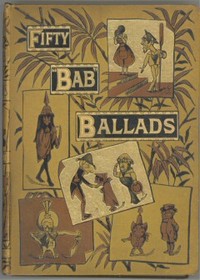Ballad: The Periwinkle Girl
byThe Periwinkle Girl charms readers with a blend of humor, irony, and quiet criticism aimed at shallow judgments and social snobbery. The narrator begins by admitting a youthful dismissal of winkles—not for their taste, but because they lacked glamour or entertainment value. Winkles were plain, unfashionable, and didn’t belong in the world of flirtation or cigars, so they were ignored. That notion shifts the moment Mary enters the scene. Selling winkles with grace and beauty, she transforms the ordinary into something almost magical. The narrator, once scornful, finds himself captivated—not by the product, but by the seller. It’s a reminder that sometimes, the value of a thing lies not in its label or purpose, but in the hands that present it. Through Mary, the winkle becomes a symbol of overlooked worth, and the narrator begins to question the assumptions that once shaped his youthful disdain.
As Mary’s fame grows, so too does her appeal to the elite. Two dukes and an earl emerge as her suitors, each detailed not by their charm or intellect, but by their clothing and underclothing—an exaggerated measure of status. Duke Bailey boasts golden boots and silver beneath; Duke Humphy settles for silver boots and pewter layers. The Earl, however, wears leather shoes and cambric undergarments, marking him as the least wealthy of the three. Mary’s rejection of the Earl isn’t based on personality but purely on these material distinctions. This absurd focus on fashion as a barometer for romance is where the ballad leans into satire. Readers are encouraged to laugh at how wealth—and not sincerity—shapes desirability in this peculiar world. The exaggerated focus on boot metals and fabric quality reflects how easily people can be valued by symbols instead of substance. Mary herself becomes both a victim and agent of this system.
Despite the lighthearted rhythm, the tale touches on deeper cultural habits. Mary’s ability to attract nobility while selling something as simple as winkles pokes at the fragility of social barriers. She holds power not because of wealth, but because of how she presents herself—poised, graceful, and confident. Her suitors, bound by vanity and competition, define themselves through accessories instead of action. The Earl’s cambric underclothes, while clean and functional, are mocked not for their use, but for their lack of flair. This judgment echoes modern habits of valuing appearances over substance, often to comic or tragic effect. The ballad reminds us how easily we can be misled by the gloss of wealth, and how quickly genuine connection is dismissed in favor of spectacle. In this way, Mary reflects a culture that praises what shines, even if it holds no weight.
Yet, it is not Mary who is mocked—it is the world around her. The narrator doesn’t blame her for seeking the dukes. He blames the values that taught her what to prize. If gold boots mean success, and cambric means poverty, then it’s society that has made such distinctions matter. Through clever rhymes and exaggerated symbols, the story reveals how beauty and charm can obscure more thoughtful choices. Mary is both admirable and pitiable—admired for her independence, pitied for her strict standards. Her refusal of the Earl is comic, yes, but also instructive. Readers are invited to laugh and then reflect. Would they judge someone by their boots? Would they ignore sincerity for shine?
The transformation of the narrator offers one final note of change. From disliking winkles to embracing them thanks to Mary, he begins to see value where once he saw none. It’s a quiet commentary on growth—how experience reshapes perception. Perhaps, in watching Mary choose between golden and pewter-clad suitors, he realizes how superficial his own thinking once was. That shift in awareness, however subtle, is what gives the ballad its final lift. We’re not just reading about Mary or her suitors—we’re watching a man recognize his own foolishness. And through his eyes, we’re given the chance to question our own snap judgments, whether they’re about food, fashion, or love.
In the end, The Periwinkle Girl is more than a comical account of courtship and seafood. It’s a wry celebration of personality, perception, and the layers of meaning hidden beneath simple things. With winkles as its motif and Mary as its muse, the ballad asks readers to laugh, but also to look again—because sometimes what seems silly on the surface holds truths worth peeling back.

